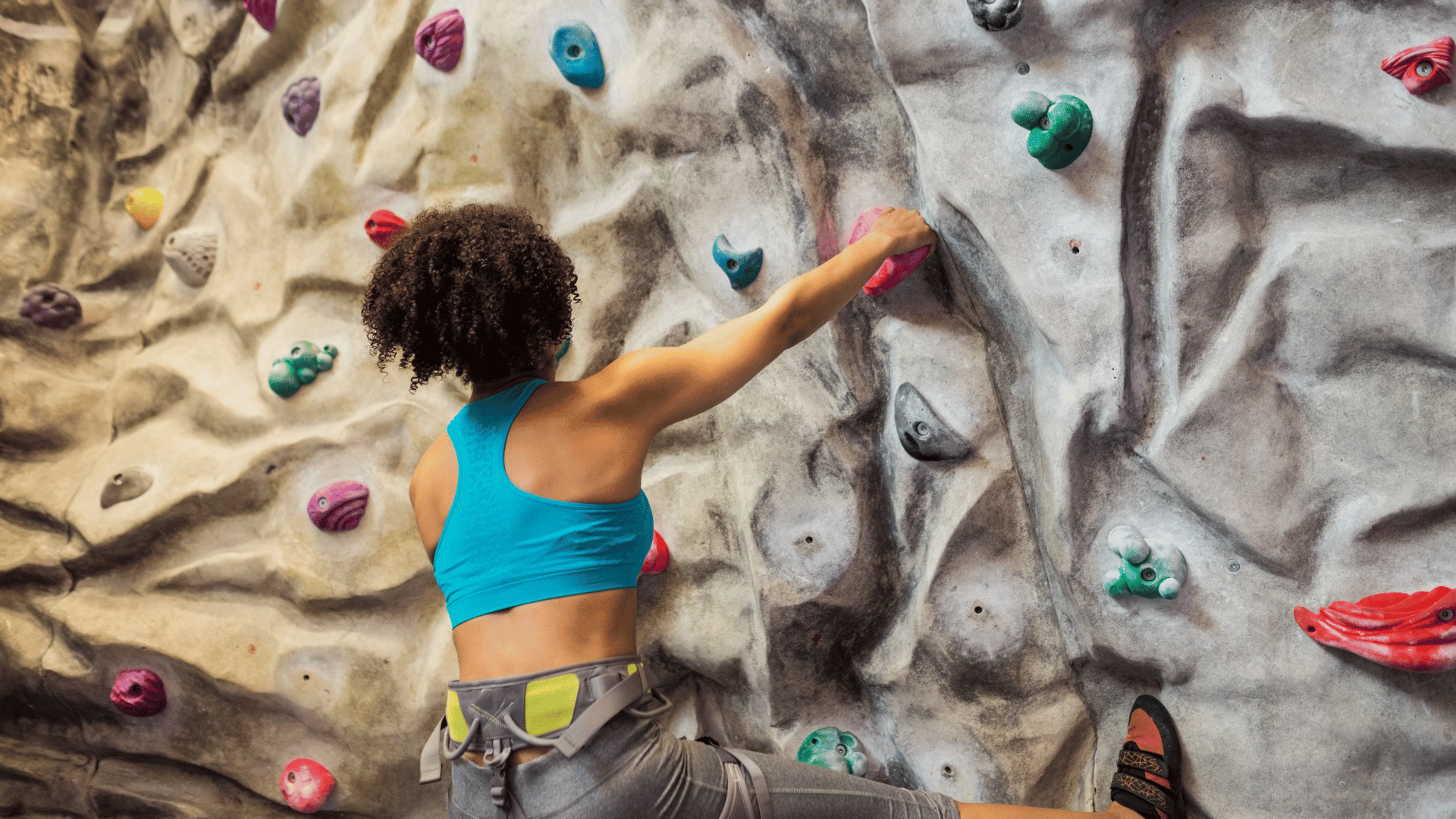Indoor rock climbing is a fantastic sport that combines strength, strategy, and fun. Whether you're a climber looking to document your progress or a photographer aiming to capture dynamic moments, photographing indoor climbing requires a unique approach. Limited lighting, busy backgrounds, and fast-moving climbers can pose challenges—but with the proper techniques, you can create striking images that highlight the energy and skill of the sport.
Guide to taking amazing photos while indoor rock climbing
Understand the Climbing Environment
Indoor climbing gyms have unique features that influence photography:
- Colorful holds: Brightly colored holds add visual interest but can also create cluttered backgrounds.
- Artificial lighting: Lighting in climbing gyms can be dim or uneven, requiring adjustments to your camera settings.
- Busy spaces: Gyms are often crowded, so work around other climbers and distractions.
Take a moment to assess the space before you start shooting. Look for areas with good lighting, minimal crowding, and interesting angles.
Use the Right Gear
Having the appropriate photography equipment makes a big difference:
- Camera: A DSLR or mirrorless camera offers the most flexibility, but modern smartphones can also produce great results.
- Lenses: A wide-angle lens captures the entire wall, while a telephoto lens focuses on climbers and details.
- Tripod or monopod: Stabilize your camera for sharper shots, especially in low light.
- Flashes or lights: Use external lighting sparingly, as bright flashes can distract climbers. LED panels are a better option for diffused lighting.
Ensure your gear is portable and easy to maneuver in the gym.
Adjust Your Camera Settings for Indoor Conditions
Indoor lighting can be tricky, so you’ll need to fine-tune your settings:
- Increase ISO: A higher ISO helps brighten shots in low light but avoid going too high to minimize noise.
- Use a fast shutter speed: Freeze motion with a shutter speed of 1/500 or faster.
- Open the aperture: A wide aperture (f/2.8 or lower) allows more light in and creates a shallow depth of field to blur busy backgrounds.
- Enable continuous shooting: Capture multiple frames in quick succession to catch the perfect moment.
Experiment with settings to find the right balance for your gym’s lighting conditions.
Find the Best Angles
Creative angles bring climbing photos to life.
- Climber’s perspective: Shoot from above or alongside the climber to showcase their focus and technique.
- Ground-up view: Capture the climber’s journey up the wall, emphasizing height and movement.
- Profile shots: Highlight the climber’s form and the colorful route they’re tackling.
- Over-the-shoulder shots: Show the climber’s hands gripping holds or reaching for the next move.
Position yourself thoughtfully, keeping safety and gym rules in mind.
Focus on Details and Emotions
Close-up shots can be just as powerful as wide-angle action shots:
- Chalky hands: Highlight hands gripping holds or chalking up before a climb.
- Expressions: Capture the climber’s focus, determination, or joy after completing a route.
- Gear: Include images of climbing shoes, harnesses, or ropes for storytelling.
These details add depth and personality to your photos.
Work with the Lighting
Indoor climbing gyms often have challenging lighting. Here’s how to adapt:
- Use natural light: If the gym has windows, shoot during the day to take advantage of natural light.
- Avoid harsh shadows: Position your subject near softer lighting for more even exposure.
- Experiment with angles: Move around to avoid backlighting and find areas with better illumination.
If necessary, use post-processing tools to adjust brightness and contrast.
Minimize Background Clutter
Climbing gyms can have busy backgrounds that detract from your subject.
- Use a shallow depth of field: Blur out distractions by setting a low aperture.
- Shoot against plain walls: Look for routes or angles with simpler backgrounds.
- Frame your subject: Use ropes, holds, or other climbers to draw attention to the main subject.
A clean composition ensures the climber remains the focal point.
Capture Movement and Action
Action shots are the heart of climbing photography.
- Anticipate key moments: Watch for dynamic moves like big reaches, dynos, or falls.
- Use burst mode: Continuous shooting helps you capture the exact moment of action.
- Emphasize motion: Try panning with the climber or using slower shutter speeds to create motion blur.
Be ready to react quickly, as climbing movements can be fast and unpredictable.
Respect Safety and Gym Rules
Always prioritize the safety of climbers and yourself:
- Stay out of the way: Avoid standing in fall zones or distracting climbers mid-route.
- Ask for permission: Check with gym staff and climbers before taking photos.
- Respect privacy: Get consent before sharing images of others online.
Following gym etiquette ensures a positive experience for everyone.
Edit for Impact
Post-processing can elevate your photos:
- Enhance colors: Boost saturation and contrast to make holds and walls pop.
- Crop creatively: Refine your composition by removing unnecessary elements.
- Adjust lighting: Correct exposure and shadows for a polished finish.
Photographing indoor rock climbing is a rewarding way to document the energy and skill of the sport. With the right equipment, settings, and techniques, you can capture stunning images that showcase climbers’ determination and the vibrant gym environment.
So grab your camera, head to Brooklyn Boulders, and start snapping! Whether you’re preserving memories or sharing the thrill, your photos will tell a story of adventure and achievement.
When you're done, share your best climbing photos on Instagram and tag Brooklyn Boulders. Let the world see your skills on the wall and behind the lens!



